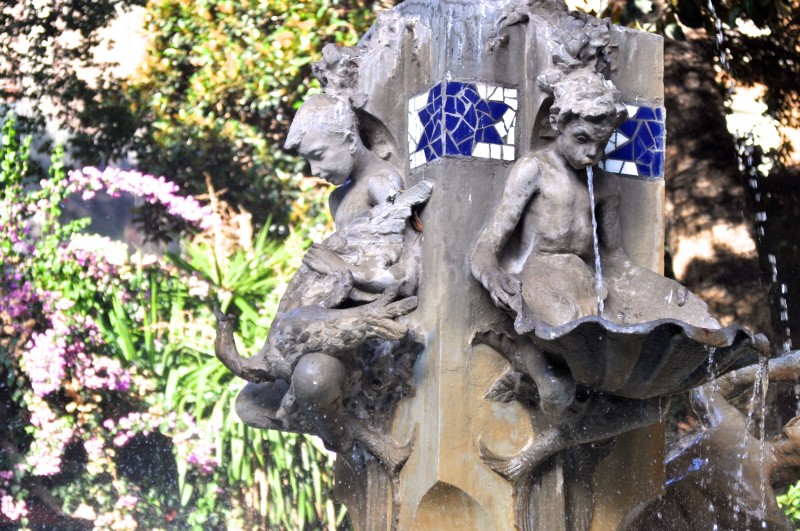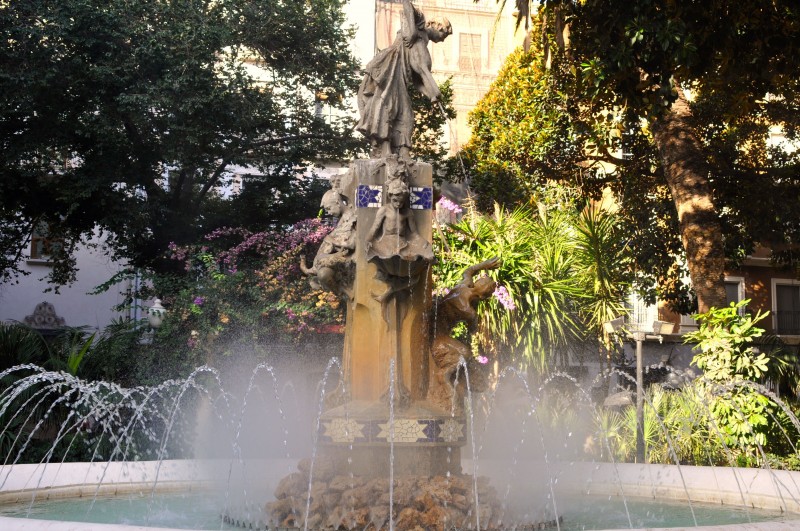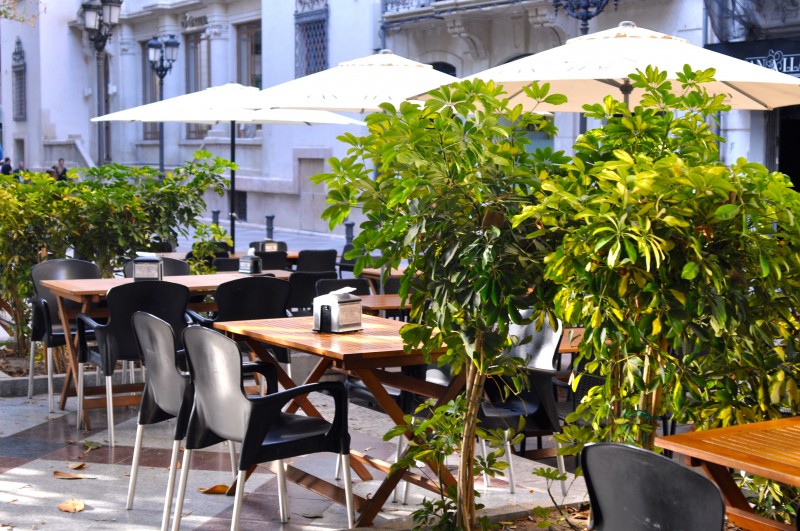Plaza de Gabriel Miró in Alicante City
One of the most beautiful plazas in Alicante city, home to the ‘Aguadora’ water fountain
The Plaza de Gabriel Miró is one of the nicest plazas in Alicante, situated between Calle San Francisco and Calle del Cid in the city centre of Alicante, just a one minute walk from La Plaza El Portal de Elche and with parking close by on Calle del Cid. This beautiful, shady plaza is close to the sea and the cruise ship port making it the ideal place to stop off, relax and have a bite to eat.

The plaza was constructed in the 19th Century, originally with the name Plaza de Las Barcas because it was from this area that boats would come in and out of Alicante city (barca is boat in Valenciano). It was later called Plaza de Isabell II before it was finally named after the famous 19th century Alicante writer, Gabrel Miró Ferrer.
It is also commonly referred to as “Plaza de los Correos” (‘Mail square’) because Alicante’s municipal offices for the national postal service, Sociedad Estatal de Correos y Telégrafos, are situated on the edge of the plaza.
On the 16th October of 1898, the town hall of Alicante installed a portable drinking water supply in this square, which was channelled all the way from the municipality of Sax in the comarca of Alt Vinalopó in Alicante province. The water was supplied through a pump from an ornamental fountain in the middle of the plaza. The pump was later replaced by an elegant statue named ‘La Aguadora’, created by the local sculptor Vicente Bañuls in 1918.
Vicente created the fountain statue, also known as the “Moza del Cántaro” (‘The Pitcher Girl’) after being inspired by a young seventeen- year old girl named Susana Llaneras Rico who lived with her family in the house opposite the sculptor.
The true story behind the fountain only came out nearly a hundred years after the sculpture was created. It transpires that the sculptor was taken in by Susana's beauty, in particular her blue eyes and dark brown hair, which she always used to tie up in a neat plait at the back of her head. Vicente was desperate for Susana to be the model for his art work, but for a long time her father was reluctant to allow his daughter to pose, given her young age and the fact that posing for artists was considered a rather socially unacceptable activity during this period.
However the father later changed his mind after he was offered a sum of money in exchange for Susana's involvement, and the young girl spent an entire year working with Vicente to create the sculpture that we see today.

For a long period the sculpture was taken down for repairs, until it was later restored in the plaza in 2008, the same year the daughter of Susana Llaneras Rico, Susan Cerdán celebrated her 83rd birthday. Susan attended the inauguration of the sculpture, delighted to be able to see the statue of her mother placed in the middle of one of the most beautiful plazas in Alicante city.
The sculpture of the girl is seen to be pouring water from a pitcher onto the head of a faun accompanied by some small children, two catching drops of water from a giant clam and the third playing with a duck, an image possibly representing the innocence of youth.
The park underwent a revamp in 1921 when a number of stone benches were installed as well as pretty flowerbeds lined with blue and white tiles imitating the waves of the Mediterranean Sea. Further reforms took place later on including resurfacing the middle of the plaza with an attractive red and cream marble walkway, as well as undertaking a number of maintenance tasks on the giant Ficus trees and Elms that surround the square. Being over one hundred and twenty years old, the Ficus trees are protected by the Valencian Regional Government as they are considered to be of environmental and cultural value to the city of Alicante.

At the south end of the plaza is a monument made of limestone with a portrait of Gabriel Miró, which was designed by the sculptor José Samper Ruiz and inaugurated in 1935. Gabriel was a renowned modernist writer, famous for his many novels as well contributing to a number of well -known newspapers in Spain.
Today many high-end restaurants with large terrazas surround the Plaza de Gabriel Miró, making it a wonderful place to stop off for a coffee and lunch during the daytime or eat dinner in the evening. On a hot day the giant Ficus trees are a welcome relief from the reflected heat of the Explanada, and due to such tranquil atmosphere it is normal to find locals taking an afternoon siesta on the benches surrounding the fountain.
Click here for more information about places to visit and things to do in Alicante City: Alicante City section



































